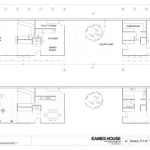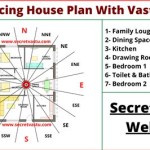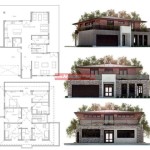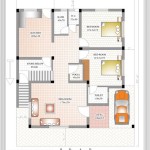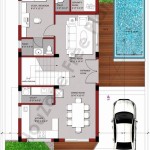Understanding Sketch Floor Plan Layout
Sketch floor plan layout is the foundational process of representing a building's design in a scaled, two-dimensional drawing. This representation illustrates the relationships between rooms, walls, doors, windows, and other structural elements, providing a visual guide for construction, renovation, or interior design. It is an essential tool for architects, interior designers, contractors, and homeowners alike, allowing for visualization and refinement of spatial arrangements before physical construction begins.
Sketch floor plans are typically created early in the design process, serving as preliminary drafts that evolve through iterations and refinements. These sketches often incorporate hand-drawn lines and annotations, representing a free-flowing exploration of design possibilities. While digital tools are now prevalent in architectural design, sketching by hand remains a valuable method for quick ideation and communication of initial concepts. The final floor plan, whether hand-drawn or digitally rendered, provides a comprehensive representation of the proposed space, incorporating accurate measurements and details necessary for construction and implementation.
The creation of a sketch floor plan layout involves several key steps. First, the overall dimensions of the space are established, often based on survey data or existing building plans. Next, the placement of walls, doors, and windows is determined, considering factors such as natural light, circulation patterns, and functional requirements. Furniture placement and equipment layout are often included to visualize how the space will be used and to ensure adequate clearances. Finally, the sketch is annotated with dimensions, notes, and symbols to provide clear and comprehensive information to all stakeholders involved in the project.
Key Point 1: The Importance of Accurate Measurement in Sketch Floor Plans
Accurate measurement is paramount in creating a useful and reliable sketch floor plan layout. Even seemingly minor discrepancies in measurements can lead to significant problems during construction, resulting in costly rework and delays. Therefore, it is crucial to employ precise measuring tools and techniques when creating a floor plan. This includes using a reliable measuring tape or laser distance measurer to determine the length and width of walls, the size and placement of windows and doors, and the overall dimensions of the space.
When sketching a floor plan, it is essential to maintain a consistent scale. A scale is a ratio that represents the relationship between the drawing and the actual size of the building. Common scales used in floor plans include 1/4 inch equals 1 foot (1/4" = 1') or 1/8 inch equals 1 foot (1/8" = 1'). Employing a consistent scale ensures that all elements in the drawing are proportionally accurate and that the floor plan accurately reflects the spatial relationships within the building. Utilizing graph paper can also aid in maintaining accuracy and consistency in the scale.
Furthermore, it is important to double-check all measurements and annotations to ensure accuracy. This includes verifying the overall dimensions of the space, the size and placement of key features such as doors and windows, and the dimensions of individual rooms. A thorough review of the floor plan can help identify and correct any errors before they lead to problems during construction. In complex projects, it may be beneficial to have a second person review the floor plan to catch any potential inaccuracies.
Beyond the physical dimensions, it is also important to consider the vertical dimensions of the space. This includes the ceiling height, the height of windows and doors, and the location of structural elements such as beams and columns. These vertical dimensions can significantly impact the functionality and aesthetics of the space, and it is important to accurately represent them in the floor plan. In some cases, it may be necessary to create separate elevations or section drawings to fully illustrate the vertical aspects of the design.
Key Point 2: Understanding Spatial Relationships and Circulation Patterns
A well-designed sketch floor plan layout carefully considers the spatial relationships between different areas of the building and the flow of circulation through the space. The arrangement of rooms and hallways should facilitate easy and efficient movement, while also providing privacy and separation between different activities. Factors such as natural light, ventilation, and acoustic considerations should also be taken into account when determining the layout of the floor plan.
One important aspect of spatial relationships is the concept of adjacency. Adjacency refers to the proximity and connection between different rooms or spaces. For example, a kitchen should ideally be located adjacent to a dining room to facilitate easy serving of meals. Similarly, a master bedroom should be located near a bathroom for convenience and privacy. Careful consideration of adjacency can help create a more functional and livable space.
Circulation patterns refer to the pathways people take as they move through the building. A well-designed floor plan should provide clear and intuitive circulation routes, minimizing unnecessary backtracking and congestion. Main thoroughfares should be wide and unobstructed, while secondary paths can be narrower. The placement of doors and hallways should be carefully considered to optimize the flow of traffic through the space.
Furthermore, the floor plan should address the potential for conflicts between different activities. For example, a living room should be located away from bedrooms to minimize noise disturbances. Similarly, a home office should be located in a quiet area of the house to facilitate concentration and productivity. By carefully considering the potential for conflicts, the floor plan can create a more harmonious and comfortable living environment.
The placement of entrances and exits is also crucial for effective circulation. Main entrances should be easily accessible from the street or driveway, while secondary entrances can provide access to specific areas of the house, such as a garage or backyard. Emergency exits should be clearly marked and easily accessible in case of fire or other emergencies.
Key Point 3: Integrating Functional Requirements and Aesthetic Considerations
A successful sketch floor plan layout effectively integrates both functional requirements and aesthetic considerations. The floor plan should not only meet the practical needs of the occupants but also create a visually appealing and harmonious space. This requires careful consideration of factors such as furniture placement, lighting design, and material selection.
Functional requirements refer to the specific needs and activities that will take place in the building. For example, a kitchen should be designed with ample counter space, storage, and appliances to facilitate cooking and food preparation. A living room should provide comfortable seating, a television, and adequate lighting for relaxation and entertainment. The floor plan should be tailored to meet the specific functional requirements of each space within the building.
Aesthetic considerations refer to the visual and sensory aspects of the space. This includes factors such as the color scheme, the choice of materials, and the overall style and design of the building. The floor plan should be designed to create a visually appealing and harmonious space that reflects the tastes and preferences of the occupants.
Furniture placement is a crucial aspect of both functional and aesthetic design. The floor plan should be designed with adequate space for furniture, allowing for comfortable movement and circulation. The placement of furniture should also be visually appealing, creating a balanced and harmonious space. Consider the scale of the furniture in relation to the size of the room, and avoid overcrowding the space.
Lighting design is another important aspect of both functional and aesthetic design. Natural light should be maximized by strategically placing windows and skylights. Artificial lighting should be carefully planned to provide adequate illumination for different activities and to create a visually appealing atmosphere. Consider using a combination of ambient, task, and accent lighting to achieve the desired effect.
Material selection is also crucial for achieving both functional and aesthetic goals. The materials used in the building should be durable, sustainable, and visually appealing. Consider using a variety of materials to add texture and interest to the space. Pay attention to the color and pattern of the materials, and ensure that they complement the overall design of the building.
Finally, it is important to consider the overall style and design of the building. The floor plan should be consistent with the architectural style of the building, whether it is modern, traditional, or contemporary. The design should also reflect the tastes and preferences of the occupants, creating a space that they will enjoy living in.

Draw Floor Plans Try Smartdraw Free And Easily More

How To Draw A Floor Plan Live Home 3d

Customize 2d Floor Plans

Draw Floor Plans To Scale With Symbols Dimensions Cedreo

Upload Draw From Or Trace Over A Blueprint Roomsketcher

How To Draw Floor Plans With Floorplanner Com Young House Love

Floor Plan Design Tutorial

How To Draw Floor Plans Create In 2d And 3d

How To Draw A Floor Plan By Hand Step Guide

Home Floor Plans House Plan Drawings

